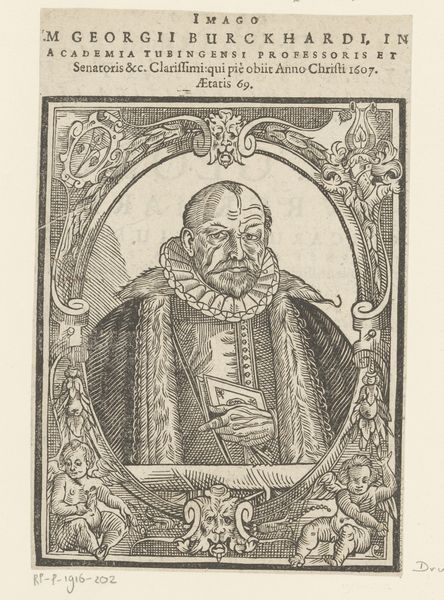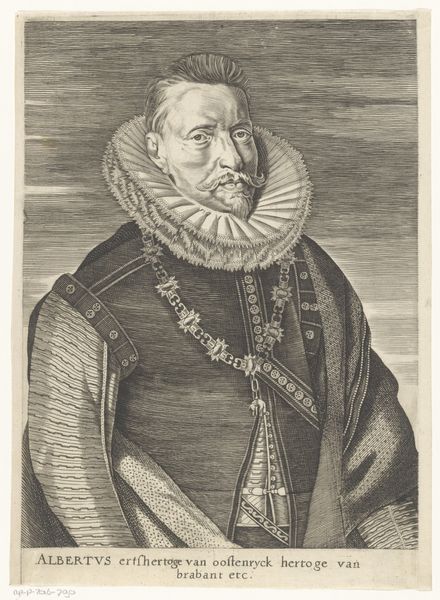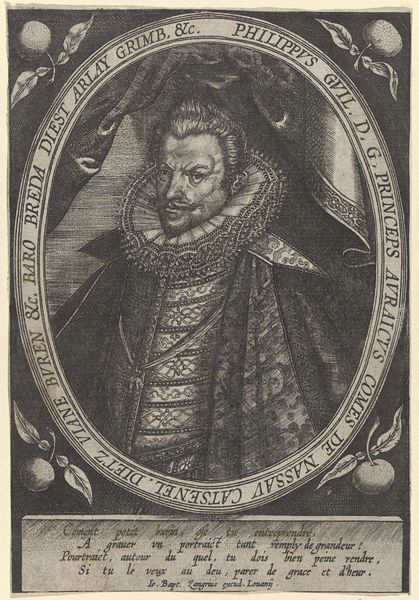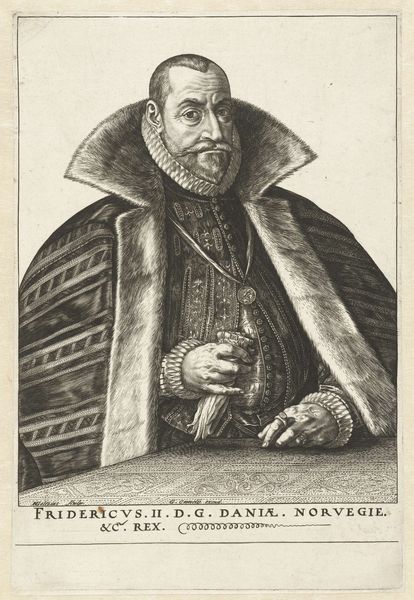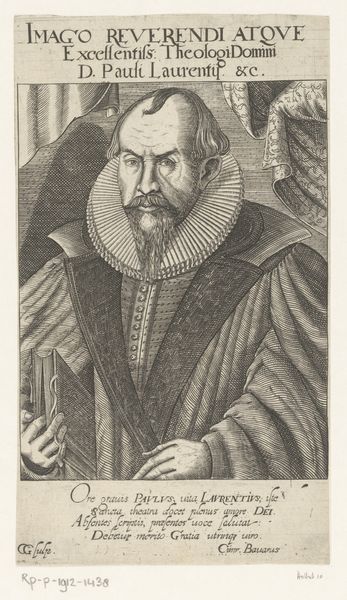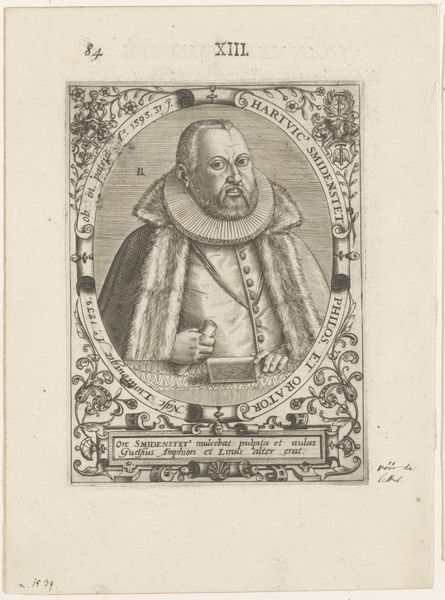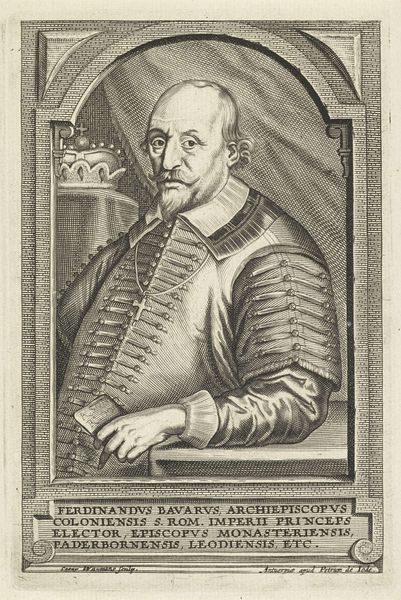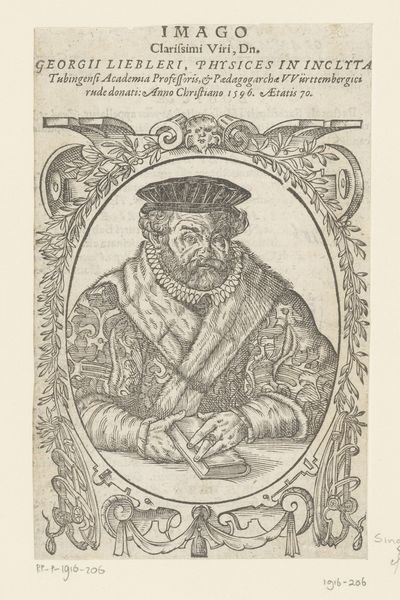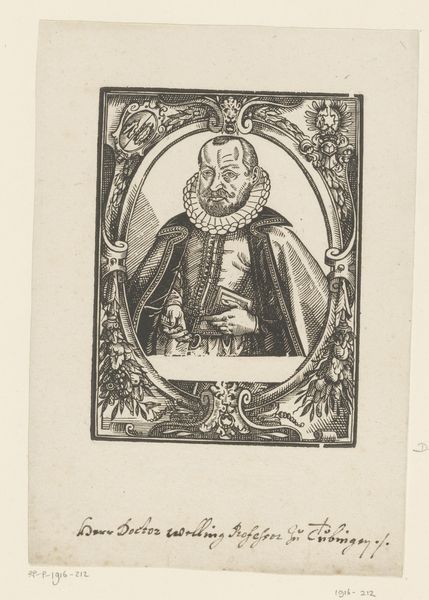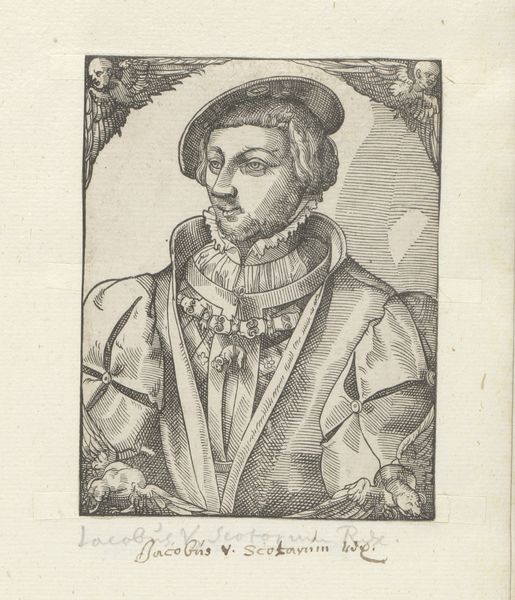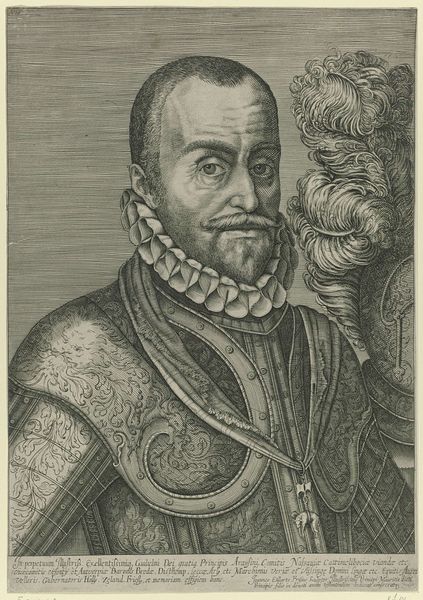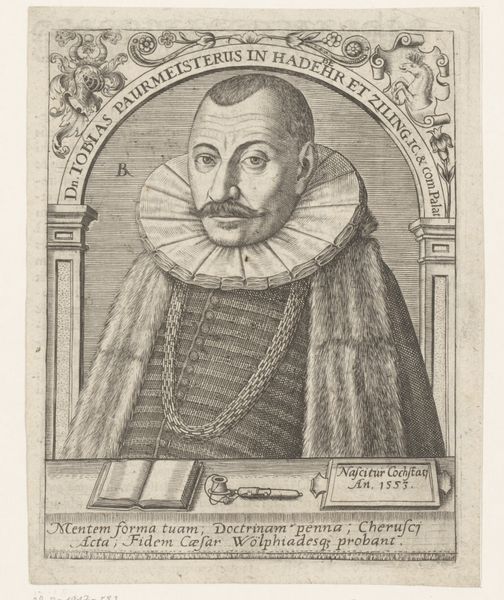
engraving
#
portrait
#
old engraving style
#
mannerism
#
11_renaissance
#
history-painting
#
engraving
Dimensions: height 172 mm, width 139 mm
Copyright: Rijks Museum: Open Domain
Curator: Looking at this, I am struck by the somber mood—it's very reserved, and perhaps even a little burdened. There's a certain heaviness conveyed by the subject's gaze, even with all of that formal attire. Editor: This is an engraving depicting Philip Louis of Neuburg. Though the artist is currently unknown, the piece dates from his lifetime, sometime between 1557 and 1615. Engravings like these served to circulate images of power and solidify reputations. Curator: So it's an image meant to project strength and authority? It seems to operate on multiple levels then. Note his attire, for example: all those repeated braided embellishments—do they echo specific societal structures or just project wealth and social status? Editor: Definitely both. Consider the ruff, the intricate detailing of his jacket, the voluminous cloak, and that subtle curtain in the background; these were powerful status symbols during the Renaissance and early Baroque periods. Beyond wealth, these denoted a certain class standing and privilege inextricably tied to notions of nobility and divine right. Curator: The way the artist uses light and shadow also speaks volumes, right? Light falls in particular ways on his features as if seeking to subtly reveal truths and reinforce ideas—the face, that gaze, a reflection of inner gravitas. It isn't just about likeness but conveying some essence. Editor: Agreed, engravings were instrumental in shaping perception. What appears stylized could actually subtly convey ideological principles or the sitter's role in contemporary sociopolitical dramas. Consider also what isn't shown: is this portrait a partial image that fits into larger ideological statements? Curator: Fascinating. One also begins to think of broader historical resonances—this image representing a man from centuries past also presents values still reflected in our current power dynamics. How do we respond, as viewers today, to these deliberately cultivated projections of power? Editor: Ultimately, viewing it now invites a critical assessment of these historical constructs that still resonate, especially considering issues around identity, authority, and social structures. Curator: Thank you. It is helpful to see beyond the formal beauty and technique, and consider the piece within its rich context, and that helps deepen appreciation in an important way.
Comments
No comments
Be the first to comment and join the conversation on the ultimate creative platform.
